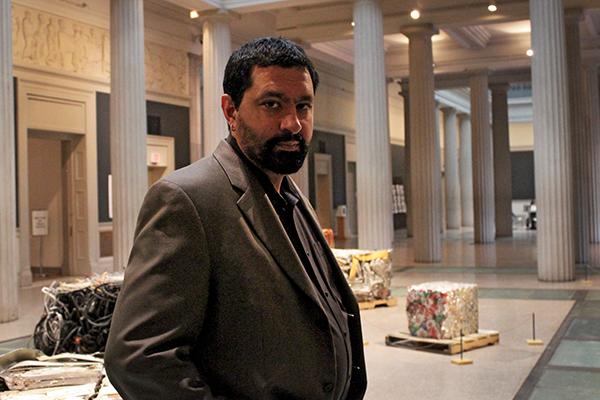Enrollment has continued to drop in the Corcoran School of the Arts and Design, even as it merges with GW’s art programs.
Since the Corcoran merged with GW in 2014, undergraduate enrollment numbers in the school have fallen — from 196 the year before GW acquired the school to 151 students last year, The Washington Post reported last month. Although officials planned for 157 students to join the school this academic year, overall drops in enrollment persist.
Sanjt Sethi, the director of the Corcoran School, said in an email that the decline in enrollment at the Corcoran that began “well before becoming part of GW” greatly concerns him.
“We want to ensure that programs are able to maintain diverse course offerings and establish a critical mass of students to build and grow this remarkable community,” Sethi said.
He added that although overall enrollment has been dropping, “preliminary data” show the number of incoming bachelor’s of fine arts students has increased by 50 percent from 2015 to 2016.
“This increase is just the beginning as we look to grow enrollment in the years ahead, in part by introducing new undergraduate and graduate programs,” Sethi said. “As all of the creative degree granting programs come under the Corcoran School of the Arts and Design this year, we will look to create a broader, more diverse undergraduate cohort and further increase our curricular offerings.”
If enrollment continues to drop, it could lead to financial troubles for the University overall. GW’s operating budget is 75 percent reliant on tuition dollars, and past drops in enrollment in graduate programs have led to hiring freezes and budget cuts.
When the Corcoran initially merged with GW in 2014, the school had faced years of financial uncertainty and mismanagement. The school’s accreditors said at the time that the merger with GW would be the only way to save the financially failing school.
Sethi said earlier this year that all of GW’s art programs will be housed in the Corcoran School by the start of fiscal year 2017 — a final mark of the merger.
Raquel Tucker was a freshman studying interior design in 2014 during the merger. She said in an email that she thought the merger would be beneficial because it would give her an opportunity to study things outside of art. But dropping enrollment even after the schools merged challenged her and other students.
“The merger actually turned out very horrible and any Corcoran student will agree,” she said. “As the enrollment dropped, there was no back up plan for us to continue our majors. My major in particular was interior design and the enrollment dropped so they were unable to provide my core classes.”
GW placed Tucker in graduate level courses on the same topics, even though she was an undergraduate student, she said. Because of the differences between Corcoran and the Columbian College’s curriculums, transferring would have added an extra year to her collegiate career, which financial aid may not have covered, she said.
Tucker said she had issues with her financial aid at GW, leaving her unable to pay or finish her degree. She was also left with a hold on her transcript that prevented her from transferring, she said.
“Many of the teachers also left this year, so the current students are stuck with a largely new staff,” Tucker said. “Overall, I’ve been cheated out of my education.”
University spokeswoman Kurie Fitzgerald said GW is committed to maintaining the same grants and scholarship funds for Corcoran students that attended the school during the merger, meaning that if students were awarded a scholarship from the Corcoran College of Art and Design, they would be awarded the same amount from GW.
She added that when the merger went through, GW was unable to provide entry or mid-level interior design classes in the Corcoran School because of low enrollment, but advised those students who had not completed their degree to join GW interior architecture and design classes to fulfill requirements and also gave them the option of joining graduate level courses.
In May, 10 full-time Corcoran faculty members were laid off after months of uncertainty about their contract status. Only nine faculty members now remain. At the time of these layoffs, Corcoran students and faculty said they were worried about the future of the Corcoran’s programs and community.
At the time of the initial merger, GW laid off 150 part-time faculty and staff. Some students, faculty and staff members then said they felt uneasy about the future of the Corcoran, prompting an advocacy group to attempt to block the deal.
Out of the 18 Corcoran and GW arts faculty members contacted, 15 did not return requests for comment and three declined to comment.
Sara Sklaroff, a former Corcoran student who decided to continue her education studying graphic design at the Corcoran after earning a bachelor’s of arts in English at another institution, said that while she enjoyed her time at the school, it appeared as if GW did not know what to do with a traditional art school.
“It didn’t affect me personally all that much, but I could see fellow students were deeply unhappy as things unfolded,” Sklaroff said.







